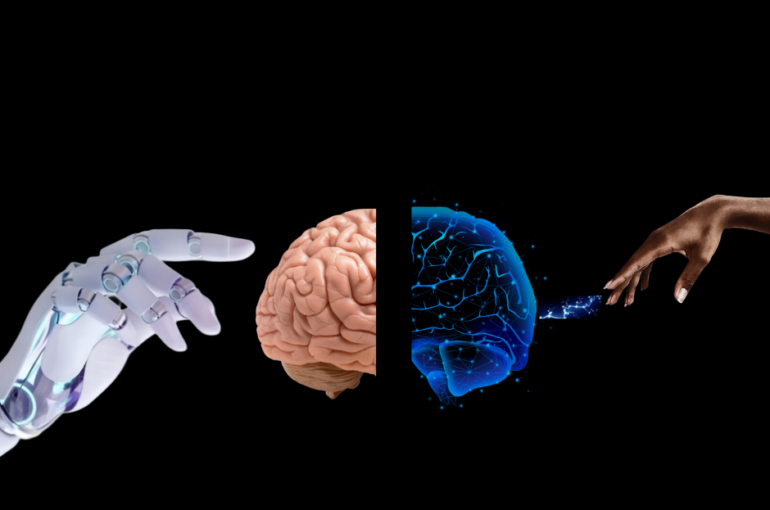Digitizing Dreams: A Blueprint for a Digital Society
,
There’s been a lot of talk about being a fully Digital Society. As our world progressively vaults into this era of technology, we find ourselves contemplating the blueprint of becoming a fully digital society, especially for us a developing country. But don’t just imagine us becoming a digital dynamo overnight – envision it more like learning to juggle while riding a unicycle, uphill, and against the wind. Daunting? Yes. Impossible? Absolutely not!
So, without further ado, let’s talk a quick trip into the transition towards a fully digital society, and some metrics to measure how close we are to it, because “You can’t manage what you can’t measure.” – Peter Drucker
Step 1: Laying the Foundation – Infrastructure and Connectivity
Just as Rome wasn’t built in a day, a digital society isn’t built on patchy internet coverage or outdated technology. Imagine trying to access your favourite Netflix series on a dial-up connection. High-speed internet and widespread connectivity are as essential to a digital society as water is to a fish. We must invest in modern infrastructure to enable seamless access to digital services across the country.
How to measure the foundation?
Internet penetration rate, is the percentage of the population with access to the internet. A high rate indicates widespread access.
Broadband speed: Average upload and download speeds, indicating the quality of the internet connection.
Mobile data coverage: Percentage of the population with access to mobile data services.
Step 2: Climbing the Ladder – Digital Literacy
Being digitally literate is the new black. Think of it as learning a new language – one of codes, algorithms, and interfaces. Having the infrastructure is one thing, but if people can’t decode the digital hieroglyphs, it’s like having a cookbook but not knowing how to crack an egg. Hence, comprehensive education programs aimed at imparting digital skills are crucial.
How to measure the digital literacy?
Digital divide: The difference in internet access rates between different socioeconomic groups, rural vs. urban, or other demographic categories.
Affordability of digital technology: The cost of digital devices and internet access relative to average income levels.
Digital inclusion initiatives: The number of programs in place to promote digital equity and their success rates.
Step 3: Building the Fortress – Cybersecurity
In the digital world, we’re not just fighting windmills anymore; we’re combating a wave of cyber-attacks and data breaches. Creating a secure digital space is akin to constructing a fortress around our digital assets. Ensuring robust cybersecurity is an irreplaceable step in our quest to become a fully digital society.
How to measure our cybersecurity capabilities?
Cybersecurity incidents: The number of cyber threats, breaches, and attacks experienced over a given period.
Compliance with international cybersecurity standards: Measures the implementation of recommended cybersecurity practices.
Cybersecurity awareness: The level of understanding among the general population and organizations about the importance of cybersecurity and how to safeguard against threats.
Step 4: Powering the People – E-Government Services
Just like the switch from snail mail to email was revolutionary, so is the transition from traditional to digital government services. Imagine filing taxes or renewing your passport from the comfort of your home, coffee in hand and furry friend by your side. Sounds ideal, doesn’t it? E-government services bring convenience, efficiency, and transparency to the public.
How to measure EGov?
Online public services index: The extent to which public services are available online.
User satisfaction rate: The percentage of citizens who are satisfied with the digital services offered by the government.
Digital public service usage: The proportion of citizens using e-government services compared to traditional channels.
Step 5: Digital Equity – Leaving No One Behind
Lastly, but perhaps most importantly, is ensuring that no one is left in the digital dust. Digital equity means that everyone, from the farmer in the remote countryside to the budding entrepreneur in the bustling city, has equal access to digital opportunities.
While this guide paints a blueprint for becoming a digital society, the reality is that the transformation is a Herculean task requiring collective efforts from the government, private sectors, and individuals. Picture this: trying to bake a soufflé in a toaster. Hard, right? But, with perseverance and the right tools, a fully digital society is within reach.
How to measure Digital Equity?
Digital divide: The difference in internet access rates between different socioeconomic groups, rural vs. urban, or other demographic categories.
Affordability of digital technology: The cost of digital devices and internet access relative to average income levels.
Digital inclusion initiatives: The number of programs in place to promote digital equity and their success rates.
To us and other developing countries striving to become digital societies, remember that patience is the companion of wisdom. Digitization is not a sprint, but a marathon. In the face of this digital revolution, remember we are fully digital when digital is accessible to all equally.
Happy Insights
Other articles
-

Is Artificial Intelligence the same as Machine Learning?
In the rapidly evolving world of technology, terms like Artificial Intelligence (AI) and Machine Learning (ML) are often used interchangeably. However, while they are closely related, they are not the same thing. In this blog post, we’ll dive into the intricacies of AI and ML, unravel their differences, and explore how they are shaping our […]
Enroll -

Who Are the Big Four in Artificial Intelligence and What Caribbean Businesses Can Learn from Them
The Big Four of Artificial Intelligence: Lessons for Caribbean Business Leaders Explore how the world’s leading AI companies, OpenAI, Google DeepMind, Anthropic, and Meta, are shaping the global intelligence economy and what Caribbean organizations can learn from their strategies. Introduction: Learning from the Giants Artificial Intelligence is the new frontier of global competition. Behind its […]
Enroll -

The Future of Artificial Intelligence in the Caribbean Economy
The Future of AI in the Caribbean Economy: Building Intelligence, Innovation, and Independence Discover how artificial intelligence can transform the Caribbean economy. Learn how applied AI can enhance productivity, regional innovation, and global competitiveness for Caribbean nations and businesses. Introduction: A Region on the Edge of Reinvention The Caribbean stands at a turning point. For […]
Enroll -

What Type of AI Powers ChatGPT and Other Generative Systems
The AI Behind ChatGPT Explained: Understanding Generative Systems and How They Transform Business Explore the science and strategy behind ChatGPT and other generative AI systems. Learn how large language models work, what they mean for business, and how organizations can harness them responsibly. Introduction: A New Kind of Intelligence Artificial Intelligence once focused on recognition. […]
Enroll
